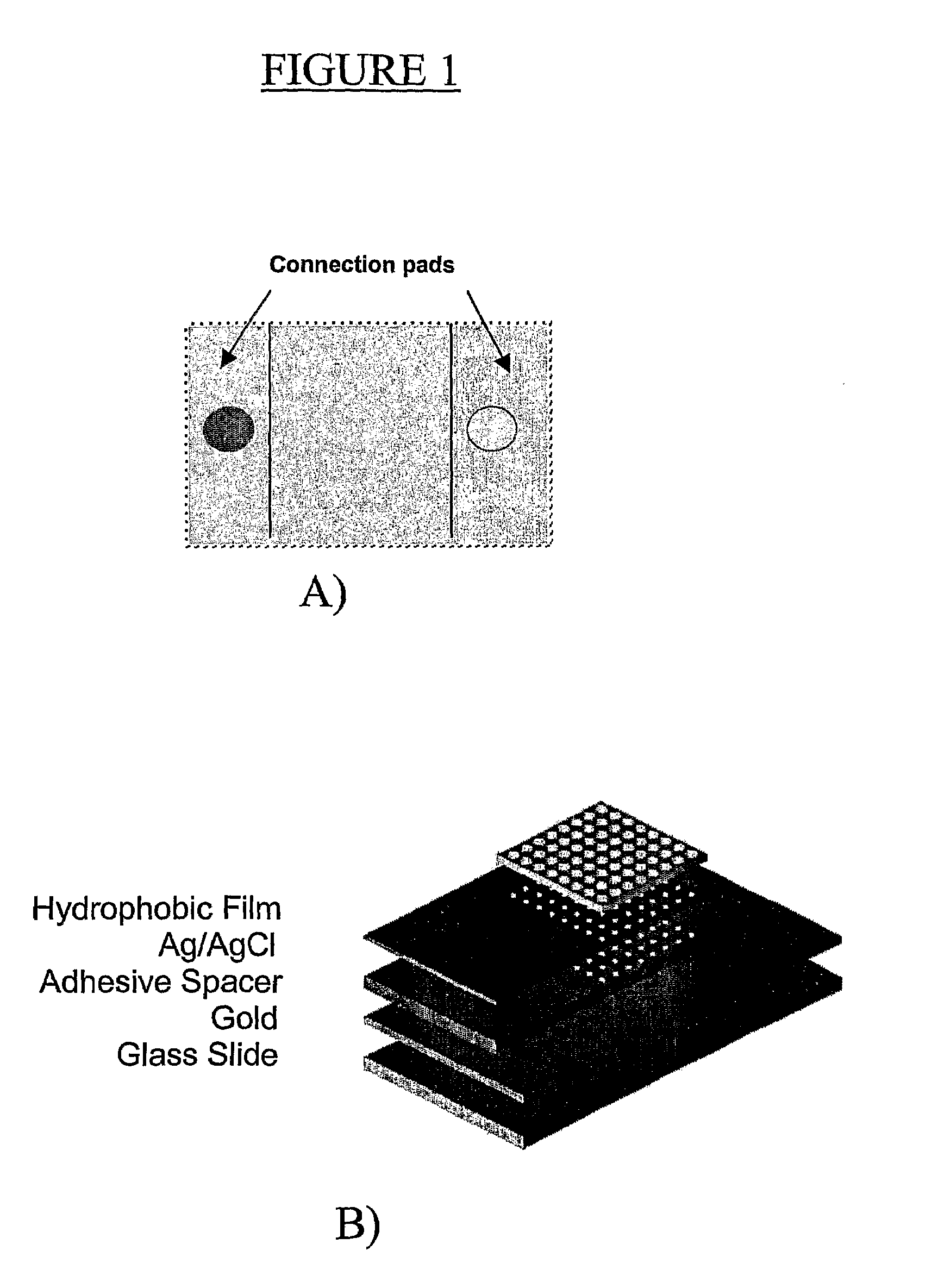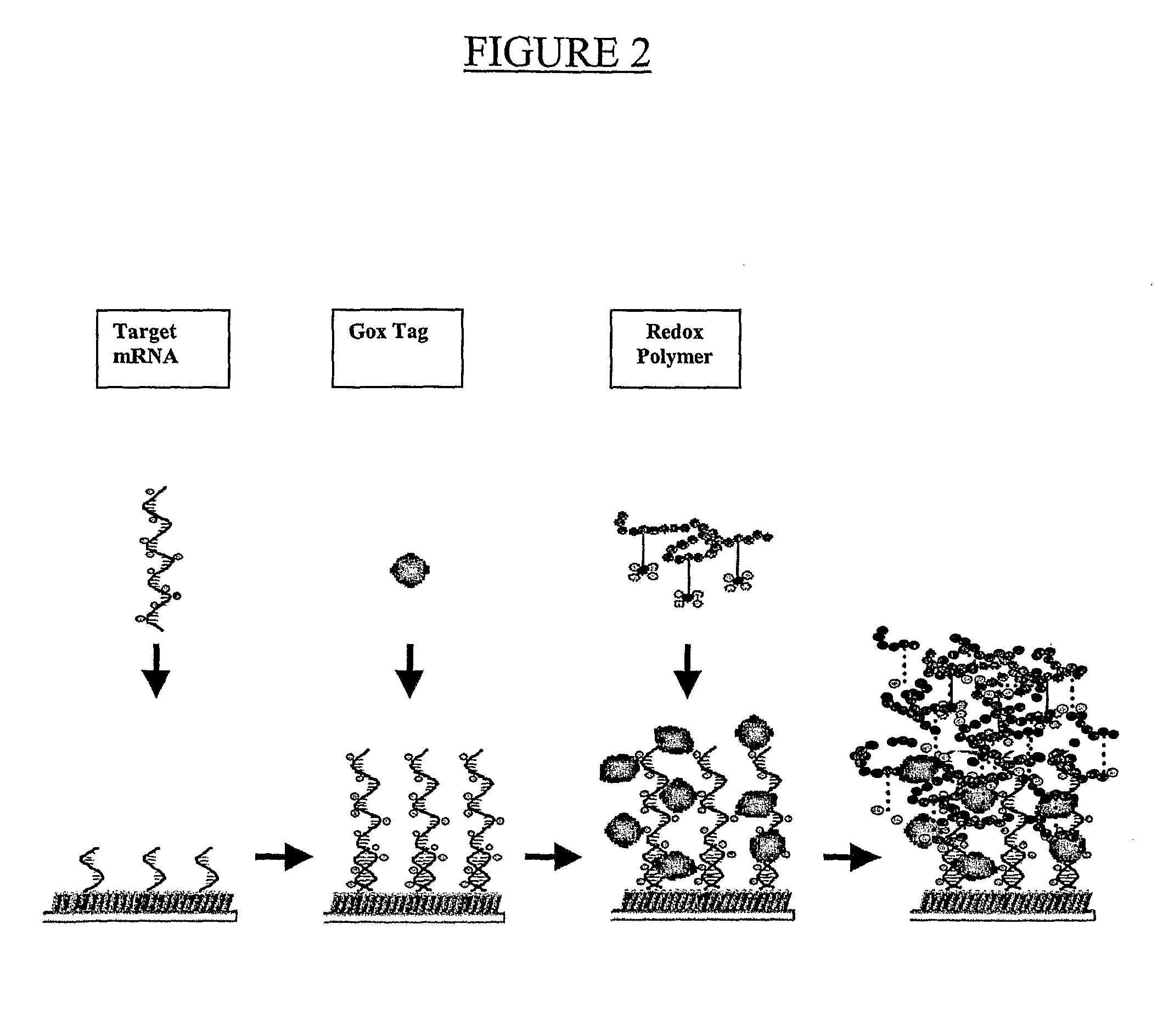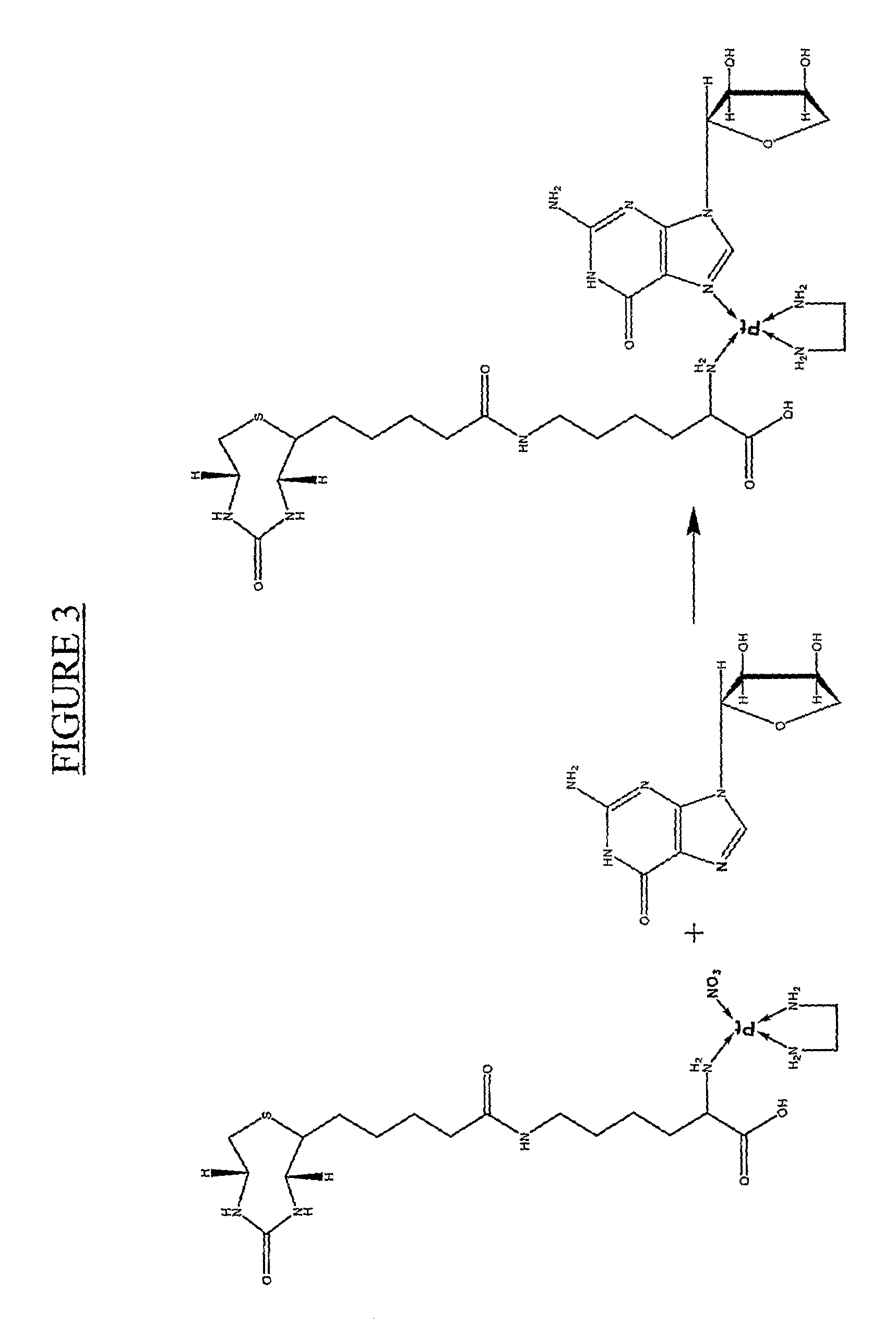Method and device for detection of nucleic acids and/or polypeptides
a nucleic acid and polypeptide technology, applied in the field of nucleic acid and/or polypeptide detection methods and devices, can solve the problems of prolonging assay time, rt-pcr amplification tends to introduce contamination, and the protection technique of northern blotting and ribonuclease is not feasible, and achieves the effect of simple and rapid detection
- Summary
- Abstract
- Description
- Claims
- Application Information
AI Technical Summary
Benefits of technology
Problems solved by technology
Method used
Image
Examples
examples
Materials
[0078]Unless otherwise stated, reagents were obtained from Sigma-Aldrich (St Louis, Mo., USA) and used without further purification. Glucose oxidase-avidin conjugates (GOx-A) were purchased from Vector Laboratories (San Diego, Calif., USA). Cisplatin-coupled biotin conjugates (Biotin-Chem-Link) were obtained from Roche Diagnostics (Mannheim, Germany). [Osmium(2,2′-bipyridine)2C12]Cl ([Os(bpy)2]), [Osmium(4,4′-dimethyl-2,2′-bipyridine)2C12]Cl, ([Os(dmbpy)2]) and [Osmium(4,4′diamino-2,2′-bipyridine)2C12]Cl ([Os(dabpy)2]) were synthesized from K2OsC16 following the proposed procedure by Lay et al. (Lay, P. A., et al., Inorg. Synth. 24, 291, 1986, herein incorporated by reference). [Osmium(2,2′-bipyridine)2(1-methylimidazole)Cl]C12 ([Os(bpy)2(Mim)]) and [Osmium(2,2′-bipyridine)2(imidazole)Cl]C12 ([(Os(bpy)2(im)]) complexes were prepared from the [Os(bpy)2C12] complex according to literature procedures (Sullivan, B. P., Salmon D. & Meyer, T. J. Inorg. Chem., 1978, 17, 3334, here...
PUM
| Property | Measurement | Unit |
|---|---|---|
| pH | aaaaa | aaaaa |
| volume | aaaaa | aaaaa |
| volume | aaaaa | aaaaa |
Abstract
Description
Claims
Application Information
 Login to View More
Login to View More - R&D
- Intellectual Property
- Life Sciences
- Materials
- Tech Scout
- Unparalleled Data Quality
- Higher Quality Content
- 60% Fewer Hallucinations
Browse by: Latest US Patents, China's latest patents, Technical Efficacy Thesaurus, Application Domain, Technology Topic, Popular Technical Reports.
© 2025 PatSnap. All rights reserved.Legal|Privacy policy|Modern Slavery Act Transparency Statement|Sitemap|About US| Contact US: help@patsnap.com



